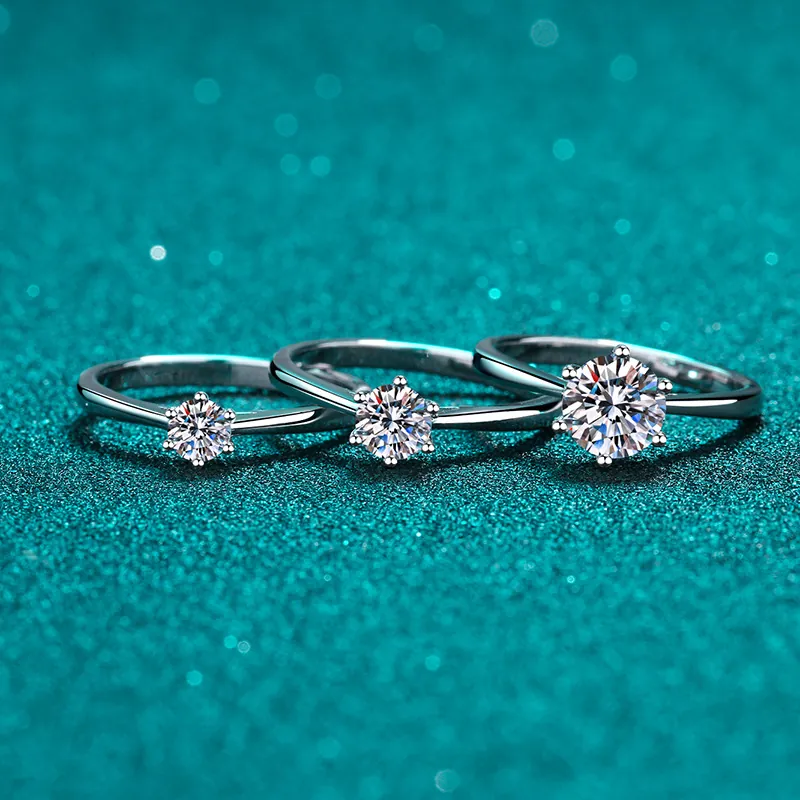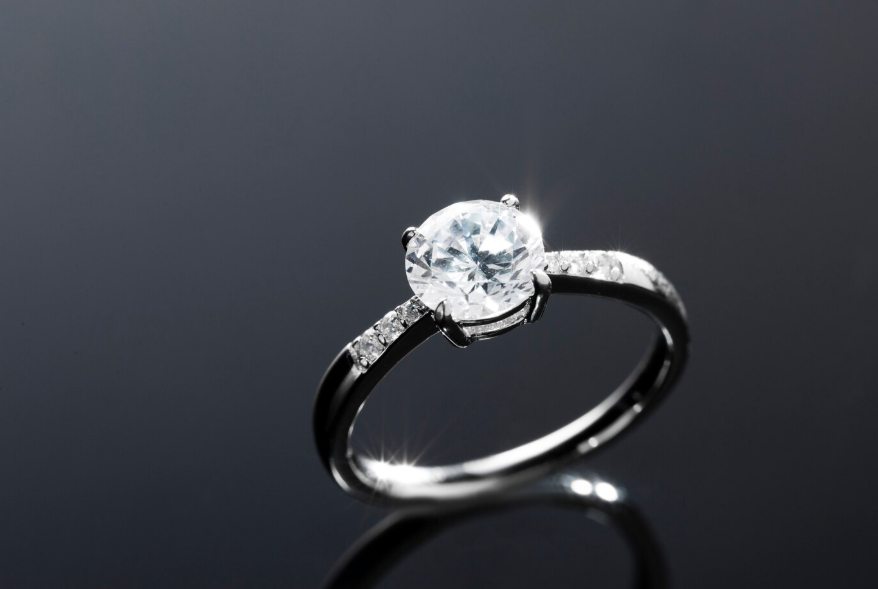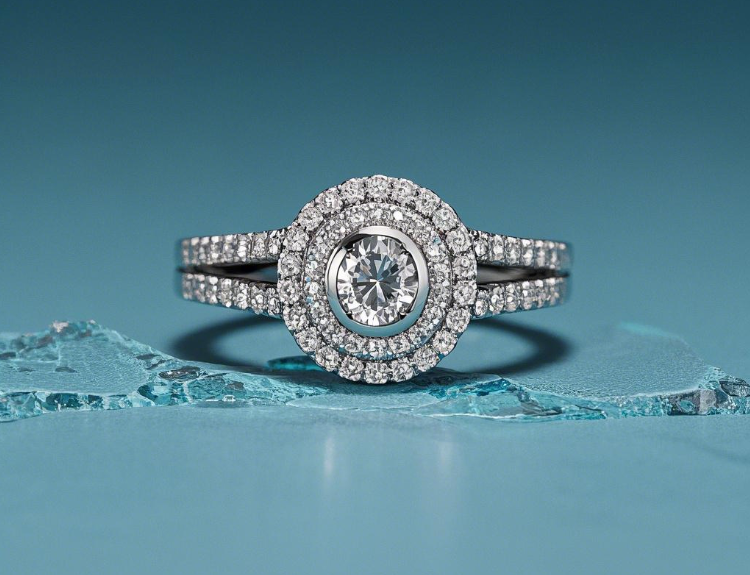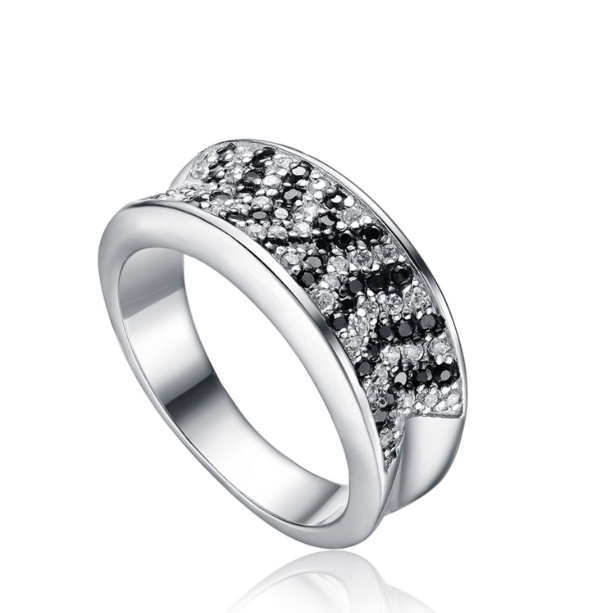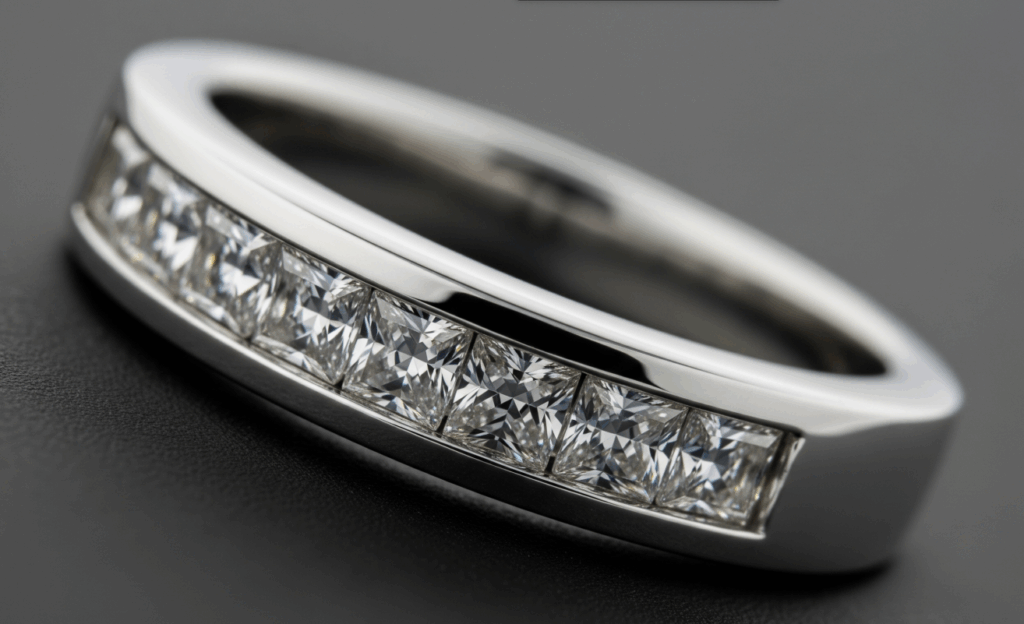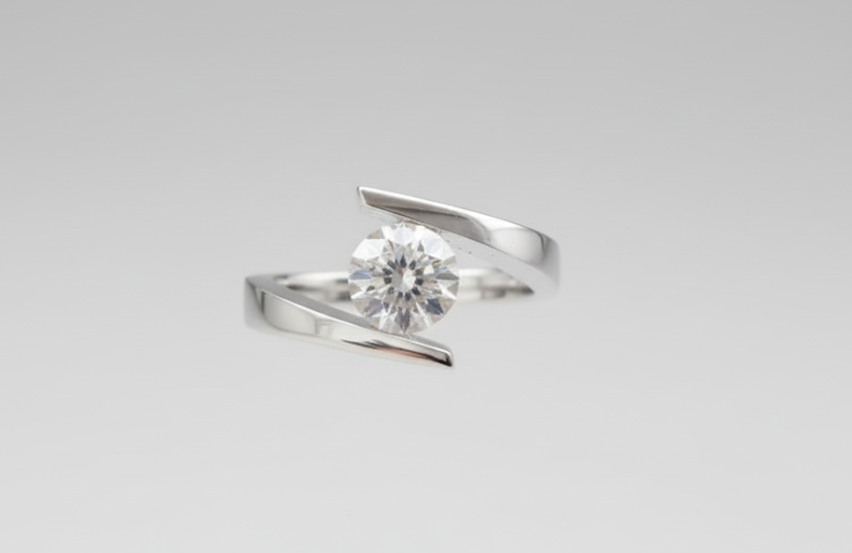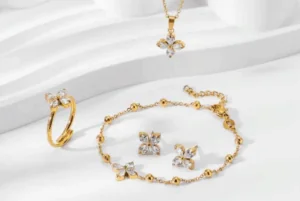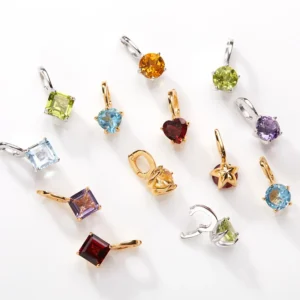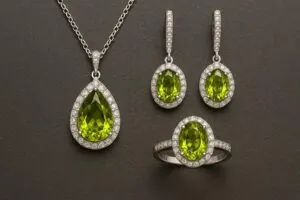How to set a gemstone in a ring? Well, gemstone settings in premium jewelry need aligning metal geometry, stone cleavage planes, and pressure distribution to avoid chipping or stress fractures and maximize light performance.
For instance, prong settings must be angled to secure vulnerable corners, bezel settings need uniform rim tension around the girdle, tension settings use alloys that create even lateral compression, and micro-pavé mounting demands consistent spacing to avert loosening.
However, it creates a challenge to balance durability and aesthetics. That’s why this article will give an overview of the five best gemstone setting techniques.
Prong Setting
The prong setting uses thin metal supports (prongs or claws) that grip a gemstone’s girdle. The jeweler carves seats in the prongs using burs and then folds the tips over the crown facets. It exposes a portion of the stone for maximum light return and sharp brilliance.
Prongs can be cast as part of the ring or soldered on individually. They must be evenly spaced to distribute pressure and avert chipping. A well-executed prong setting needs accurate alignment and tension so the stone sits flush and doesn’t shift.
Such gemstone settings are common in luxury solitaires. That’s where a diamond’s brilliance is key. Yet, it also works for colored gems when you want to show depth of color. A stable prong configuration includes well-defined bearing cuts that match the stone’s pavilion angle to avoid rocking and loosening. Gemstone setting reliability depends on the metal hardness and the prong thickness, which still appears chic but can bear daily wear.
Advantages
- Offers great stone visibility.
- Easy to adjust prong tension if needed.
- Lightweight yet secure design.
- Simplifies re-tipping and prong repairs.
- Multipurpose for many stone shapes.
Common Applications
- Classic solitaire engagement rings.
- High-end cathedral settings.
- Vintage-inspired filigree pieces.
- Basket-style mountings.
- Multi-prong cluster rings.
Bezel Setting
How to bezel set a stone? It encircles the stone’s girdle with a metal rim for a protective border bent or pressed against the gem’s outer edge. This gemstone setting counts on metal forming. The rim’s inner diameter must match the stone’s size for lower gaps.
Jewelers use a burnisher to push the bezel wall over the crown for a tight hold without fracturing the gem. The metal band can be a full bezel wrapping the entire circumference or a partial bezel covering only part of the stone. Bezel thickness and height must be planned for durability and looks. Such gemstone setting style is popular for its look. Still, it also integrates structure, guarding the gem’s edges against impacts.
Advantages
- Safeguards the girdle from chips.
- Creates a sleek, minimalistic look.
- Hides minor gem imperfections.
- Distributes pressure across a broad area.
- Suits soft or brittle gemstones.
Common Applications
- Contemporary rings with clean lines.
- Watches with flush-fitting gems.
- Wide wedding bands with inlaid stones.
- Earrings with large cabochons.
- Pendant designs requiring extra security.
Pavé Setting
The Pavé setting arranges small stones across a jewelry surface, and tiny metal beads secure each gem. The jeweler drills shallow holes (or seats) where each stone rests. Then, he raises small prongs (beads) from the metal to hold it in place. This gemstone setting forms a continuous, glittering plane with negligible visible metal.
A pavé layout can have many diamonds and demands extreme accuracy in hole spacing, bead shaping, and height consistency. It employs gravers and microscopes for uniformity so the stones appear evenly spaced. Bright-cut pavé involves extra metal cutting around the gems for reflective edges to boost the sparkle. As one of the trickiest gemstone setting methods, pavé requires bench skills and steady hand control.
Advantages
- Creates a brilliant carpet of sparkle.
- Minimizes metal visibility.
- Flexible for organic patterns.
- Allows elaborate micro-diamond work.
- Promotes piece craftsmanship.
Common Applications
- Eternity band surfaces.
- Broad ring shanks.
- Dome-shaped pendants.
- Cluster earrings.
- Embellished designer watch dials.
Channel Setting
Channel setting arranges stones in a linear channel formed by two parallel metal walls. It eliminates prongs. The jeweler cuts seats along each wall so that the gem girdles fit snugly. The table of each stone level is with or slightly below the channel edges. It delivers a smooth, snag-free surface. Stones are uniform in size for a tight and continuous line.
Channel setting depends on consistent channel depth, alignment, and well-hammered or laser-fused channel edges. It lowers stone movement and renders the design stable over time. An executed channel confirms that the gemstone setting looks rationalized and provides protection for each gem’s girdle.
Advantages
- Well-run look without prongs.
- Smooth and secure gem placement.
- Benefits side stone accents.
- Decreases daily wear on gem edges.
- Ideal for color-gradient designs.
Common Applications
- Half-eternity wedding bands.
- Men’s rings with uniform diamonds.
- Tennis bracelets with linear diamond rows.
- Geometric earring lines.
- Minimalist bangles with accent stones.
Tension Setting
The tension setting holds a gem in place through engineered compression on the stone’s girdle. Special alloys or heat treatments help strengthen the metal. Once the seats are carved, the metal band is cut and shaped to spring around the gem. When executed, it creates the illusion of the stone floating in midair with no visible support.
This gemstone setting demands calculations of pressure to avoid gem breakage or shifting. The jeweler may use hidden support bars for larger stones for stability. Tension settings undergo stress testing to confirm they can tackle daily wear. Despite the slight metal coverage, they use metallurgical properties for security.
Advantages
- Dazzling floating visual effect.
- Maximum light exposure.
- Minimum metal coverage.
- Fresh, cutting-edge design.
- Scalable for many stone sizes.
Common Applications
- Contemporary solitaire rings.
- Fashion-forward engagement styles.
- Custom designs with open bands.
- Color gemstone focal points.
- Conceptual pieces highlighting metal tension.
Star Harvest: A Trustworthy Partner
Gemstone setting technology is an indispensable part of jewelry manufacturing, directly impacting the aesthetics, durability, and value of each piece. As a trusted partner, Star Harvest understands the critical requirements for gemstone setting techniques and ensures every piece combines artistry with functionality.
At Star Harvest, we use advanced wax setting techniques to position each stone with precision and capture every intricate detail of your design. This method stabilizes the stones before casting and reduces the need for post-production adjustments. On top of this foundation, we support a wide range of gemstone settings, including prong, bezel, channel, and pavé, to achieve precise stone alignment, highlight design details, and secure each placement.
If you are looking for precise and professional gemstone setting for your jewelry, feel free to get in touch with Star Harvest today.

